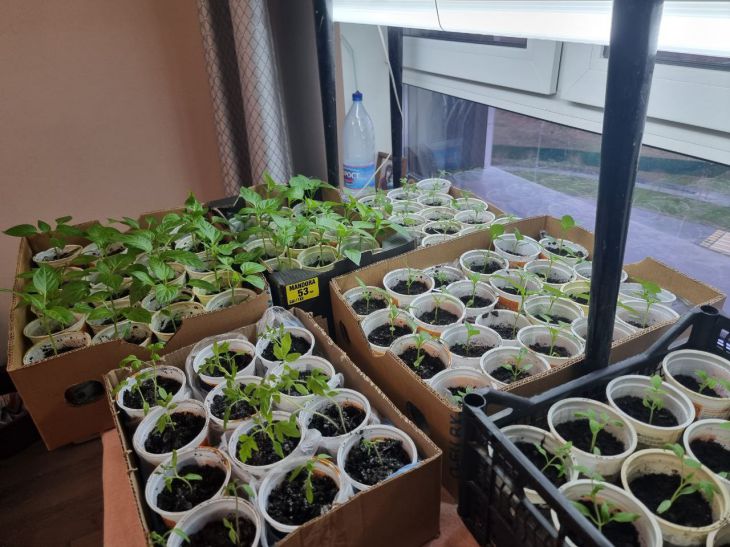Spider mites on seedlings: how to recognize and how to save plants
The seedlings have already sprouted, they are several days or weeks old, but suddenly something goes wrong. The plants stop growing, start to dry out, the leaves fall off.
It would seem that watering is normal, fertilizing, lighting. But once healthy and strong seedlings begin to die without any visible reasons. So you need to look for invisible ones. Most likely, the seedlings got sick because spider mites appeared on them.
It is this invisible parasite that destroys crops. It is so small that it is very difficult to detect it immediately, says Anastasia Kovrizhnykh .
It is usually red, yellow or brown, translucent. There are many varieties. It belongs to the arachnids. It settles on the underside of the leaf, lives in a colony, reproduces very quickly, leaves a very thin web on the plants.
Unfortunately, the web is not immediately visible, but the plants are already beginning to suffer.

Where can it appear in the landings?
- It can come from the soil. Especially if it is taken from your own plot and not fried. It hides in the upper layer, where it also reproduces.
- Through an open vent or window, with dust and wind. Then it survives in cracks. The tick can live in a dormant state for up to 5 years, and when conditions favorable for its life arise, the tick begins to multiply rapidly.
- From other indoor plants or flowers.
The tick is omnivorous. It settles not only on seedlings of any crops, but also on flowers, houseplants, berry bushes and trees. It feeds on plant sap. It affects the cells responsible for photosynthesis. Light or brown spots appear on the plants. The leaf curls up at the edges into a "tube", a web is found on the inside, then it falls off.
The best environment for its reproduction is high temperature of 25 degrees and above, dry air and increased daylight hours. These are exactly the same conditions that we create for our seedlings.
If the plantings are already affected, you need to urgently treat the plants with special preparations against spider mites. Many people wash the leaves of the plant either with running water or with a solution of laundry soap, garlic or onion infusion. All these actions reduce the colony of the mite, killing adult individuals. But the larvae and eggs remain in the soil, and after a few days, re-infection occurs. Therefore, you need to treat periodically, every few days or a week.
The parasite does not tolerate a humid environment, so a number of preventive measures can be taken.
1. For example, ventilate the room more often.
2. Spray the plants periodically.
3. Don’t forget to moisten the soil in time, preventing it from drying out.
4. After treating plants from ticks, wash the windowsill and window.
5. Before planting, the soil must be baked in the oven.
6. Avoid placing seedlings next to indoor plants and flowers, especially if they have been infected.
7. Humidify the air by placing a container of warm water nearby.
Unfortunately, spider mites are very common and gardeners often encounter them. But if you follow the prevention rules recommended in this article, the risk of infection will be much lower.
Previously, it was reported about eliminating aphids on roses .
